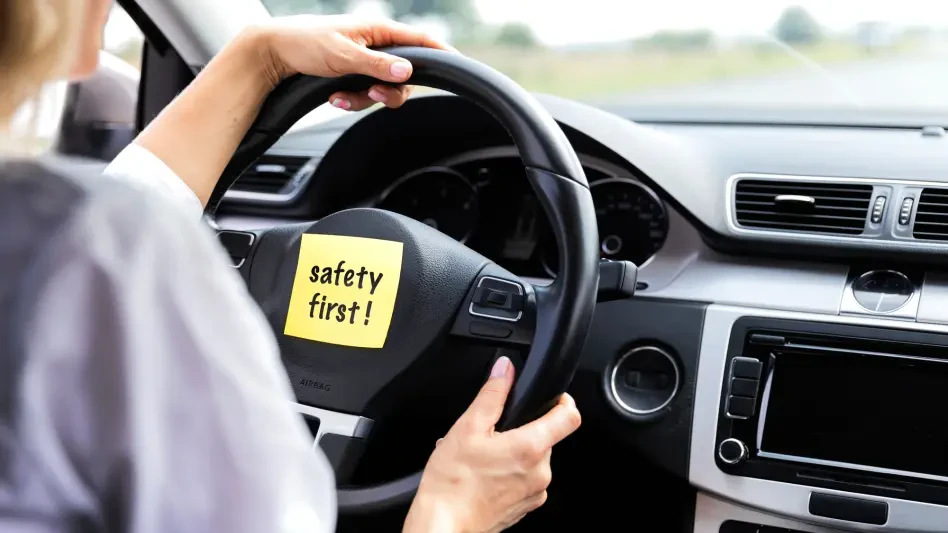The past few years have shown several exciting innovations that hold great promise for the health industry. Among the modern creations, road safety for women introduces a breakthrough in road safety—SET 50F, the world’s first advanced female crash test dummy.
Despite women making up nearly half of drivers, car crash testing has largely ignored their safety needs. For decades, car safety rules and implemented measures have strictly relied on data gathered only from male-sized crash test dummies designed to mimic their body type and posture; however, the information has been used to ensure safety for both genders.
Because little research has explored the health risks women face in vehicle accidents, a team has developed the first crash test dummy designed to reflect the average female body. This article will address the systemic limitations of traditional crash testing and explore how the new health advancement will impact road safety and occupational health.
How Safety Testing Has Historically Ignored Women
Currently, all car manufacturers are specifically required to conduct safety tests with male-proportioned dummies following test regulations such as the Federal Motor Vehicle Safety Standard 208 in the US, which have not been updated since the 1970s.
All safety testing used a full-sized male dummy to represent both genders or a scaled-down version, about the size of a 12-year-old, to portray a female body. Neither option accurately accounts for key differences in female physiology, such as driving posture, spinal alignment, pelvis shape, or muscle distribution. The increased use of male-centric dummies has created a significant gender bias in vehicle design and safety features that leave the other half of the population unaccounted for.
The advanced crash dummy was created to provide engineers with an ideal test object to gain accurate and valuable insights into the outcomes of women involved in low-speed rear impacts, informing safer seat and headrest design. The exclusion of female crash test dummies means that women are at higher risk of injury and death, resulting in these findings:
Women are more likely to suffer whiplash injuries from low-severity crashes due to neck anthropometry, its strength, and the position of the head restraint.
According to the National Highway Traffic Safety Administration, in 2024, the United States reported an estimated 39,345 traffic fatalities. Although men are more likely to get into vehicle accidents, women drivers are 17% more likely to die in a car crash.
The University of Virginia reports female drivers are 73% more likely to be injured in frontal crash collisions than men, even when wearing seatbelts.
Now, for the first time, female drivers can have access to potential vehicle safety studies that will account for their driving and body proportions in cases of collisions.
Reducing the Gender Gap in Car Safety
Astrid Linder, an engineer for the Swedish National Road and Transport Research Institute, creates SET 50F. She is made of rubber, metal, and plastic, and embedded with 24 sensors. She stands at an estimated 5 feet 4 inches and weighs an average of 136.6 pounds. Following her public debut this past month, the prototype has been studied in a warehouse 124.27 miles away from Stockholm since 2022.
The tests included strapping the dummy to a car seat and then projecting the vehicle at 9.94 mph with the use of a connected metal railing. The car was then brought to an abrupt halt to see how SET 50F would react to the sudden event. At the moment of impact, the body was shown moving in slow motion with its neck rapidly twisting as expected; however, the prototype showed considerable damage to its neck.
“The muscles in the neck are normally weaker in a woman,” says Tommy Petterson, Linder’s colleague, pointing to the nape of the dummy’s neck, deformed by the impact.
The crash dummy is designed with the anatomical attributes of a female body, such as:
Flexible necks.
Narrow shoulders.
Wide hips.
Lower center of gravity.
Less muscle mass and strength.
This allows engineers to better understand how women’s bodies respond to crashes and the specific risks they face.
“In our society and culture, for a long time, [there has been focus] on keeping men safe in vehicles because initially, that’s how the culture was. It was predominantly men who were driving,” explained Emily Thomas, head of automobile testing at the US non-profit organization Consumer Reports.
“And even though the culture shifted, unfortunately, the safety innovations didn’t shift along with it,” she said.
Since the creation of the female crash test dummy, only one company, Volvo in Sweden, has utilized the prototype. International carmakers are not required by law or regulations to purchase or use the innovation. As long as they continue to use a male-designed dummy for vehicle crash testing, they are considered compliant with vehicle safety laws.
Linder is still on a mission to urge regulatory tests to include female crash dummies. “Many new vehicles do provide good safety for both men and women, so the trick here is to assess that. So then it would require that it says in the regulation that you should use a model of both an average male and an average female,” she said on All Things Considered, NPR’s news radio program with Louise Kelly.
Conclusion
The integration of a female crash test dummy into vehicle safety testing is not merely a technological update but also a public health milestone with far-reaching positive implications for collision injury understanding and prevention for female drivers. Because of the increased use of male-designed crash test dummies, automotive safety assessments have been based exclusively on the average male, leaving women to experience a greater risk of injury in vehicle accidents, resulting in real-life statistics that show increased injury rates among female drivers and passengers. This development highlights the need to reassess safety protocols for occupational health policies. It encourages car manufacturers to include female-designed dummies in their vehicle safety testing, ensuring they can protect all drivers, regardless of gender.









